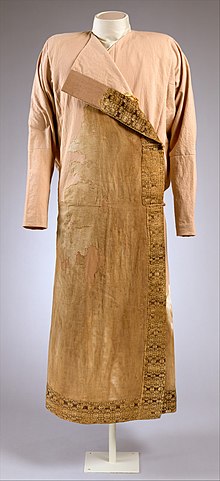Saltovo-Mayaki
Appearance

Saltovo-Mayaki or Saltovo-Majaki is the name given by archaeologists to the early medieval culture of the Pontic steppe region roughly between the Don and the Dnieper Rivers, flourishing roughly between the years of 700 and 950.[1]
Their culture was a melting pot of Onogur, Khazar, Pecheneg, Magyar, Alan, and Slavic influences. During the ninth century the Saltovo-Mayaki culture was closely associated with the Khazar Khaganate, and archaeological sites from this period are one way that historians track the geographic scope of Khazar influence.
The Saltovo-Maykaki material culture was "fairly uniform" across the various tribes.[2]
References
- ^ Brook, Kevin Alan (27 September 2006). The Jews of Khazaria. Rowman & Littlefield Publishers. pp. 35–36. Retrieved 30 May 2017.
- ^ Knauer, Elfriede R. (2001). "A Man's Caftan and Leggings from the North Caucasus of the Eighth to Tenth Century: A Genealogical Study". Metropolitan Museum Journal. 36. The University of Chicago Press: 125–154. JSTOR 1513059.

